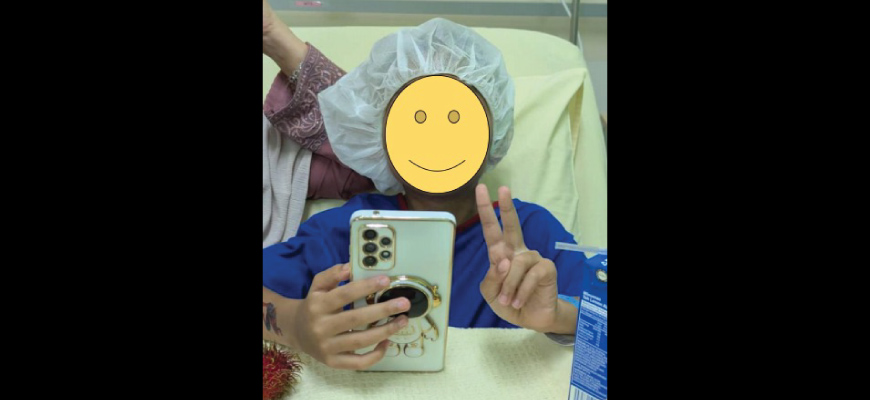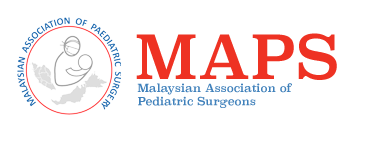
Child-Friendly Circumcision
by Zaim Hazin bin Onn
Recently, my 9-year-old son underwent a smooth ritual circumcision at a local healthcare center under local anesthesia. The center organized a “group circumcision” involving nearly 40 children, conducted under both local and general anesthesia. Overall, both parents and children were highly satisfied with the program. What stood out most to me was the incorporation of numerous child-friendly concepts throughout the process. In this article, I aim to highlight the importance of a child-friendly approach and discuss how its principles can be applied to circumcision and other medical procedures involving children.
A Child’s Right to Child-Friendly Healthcare
Children have the right to the highest attainable standard of health, as outlined in Article 24 of the UN Convention on the Rights of the Child.1 In line with this, a child-friendly approach emphasizes treating children with dignity and respect, allowing them freedom of expression when they are of appropriate age and maturity (Articles 12 and 13), ensuring equitable access to quality healthcare, and prioritizing their best interests.1,2
However, even with good intentions, healthcare procedures are often imposed on children without considering their emotional needs. This can lead to adverse effects such as agitation, stress, anxiety, and reduced cooperation during future medical visits, potentially causing long-term psychological repercussions.3
A survey of children revealed their top four recommendations for improving healthcare systems: provide more information about procedures to them, listen to them, communicate effectively, and be friendlier.4 Incorporating child-friendly approaches not only enhances the patient and parent experience but also builds trust, encourages cooperation, and leads to better healthcare outcomes.5,6
Applying Child-Friendly Principles to Circumcision
Preparation at Home
Informing the child about the upcoming circumcision is crucial. Age-appropriate, honest, and concise information should be shared. For example, explain that the procedure involves “snipping” a small portion of excess skin and is safe and quick. Using gentle words like “snip” instead of alarming terms like “chop” can alleviate fears. If the procedure involves local anesthesia, it’s better to acknowledge that the injection may sting a little rather than falsely claiming it won’t hurt at all. This honesty builds trust and fosters cooperation.
If sedation or general anesthesia is required, inform the child early and plan meals and drinks accordingly to ensure safe fasting. Preemptive sharing of information can significantly reduce anxiety and help the child prepare mentally.
Creating a Child-Friendly Environment
A welcoming environment can alleviate fear. Brightly lit facilities with colorful murals, a play area, and a cheerful ambiance can make a difference. Group events, such as potluck gatherings, foster a sense of community and help children feel they are not alone in this experience.
Incorporating Play Therapy
Play therapy can help distract children and reduce anxiety. At the center where my son had his procedure, children were given Spiderman masks and arm stickers. During the procedure, my son had the option to watch cartoons on an overhead monitor. Even without such facilities, allowing children to bring their favorite toys or watch videos on their phones can have a similar calming effect. Additionally, having a parent present during the procedure provides comfort and reassurance.
Engaging with the Child
Friendly healthcare providers who communicate with children and seek their input can have a significant positive impact. Building trust through genuine interaction helps children feel safe and involved. Even limited autonomy, such as allowing the child to choose which sticker or toy they prefer, can encourage cooperation and foster a sense of security.
Ensuring Safety and Comfort
Safety is paramount. A thorough history and examination should be conducted to rule out conditions like bleeding disorders or anatomical abnormalities that might complicate the procedure. Infection control measures, such as using sterilized equipment and single-use items, are essential.
Effective pain management is also crucial. Topical anesthetics like EMLA cream can be applied before injecting local anesthesia, and the dosage should be carefully calculated based on the child’s weight. If a child remains uncooperative or pain relief is inadequate, the procedure should be postponed and rescheduled under general anesthesia at a more suitable time.
Post-Procedural Care
After the procedure, clear post-care instructions should be provided to the parents, along with an emergency contact number for any complications. Empowering the child to take part in their recovery, such as teaching them basic wound care, can also be beneficial.
Conclusion
In line with 2024’s Children’s Day theme, “Listen to the Future,” healthcare providers must prioritize the views and needs of children. Child-friendly approaches should become the standard practice in all healthcare settings, including those offering circumcision services in private clinics. By minimizing anxiety and adverse events, these methods improve the patient experience and quality of care, benefiting both the child and the healthcare system.
Children deserve nothing less than compassionate and respectful healthcare that upholds their dignity, rights, and best interests.
References
- The United Nations Convention on the Rights of the Child, UNICEF. https://www.unicef.org.uk/what-we-do/un-convention-child-rights/
- Council of Europe guidelines on child-friendly health care Child-friendly Guidelines on child-friendly health care. https://rm.coe.int/168046ccef
- Forsner M, Cyrén M, Gerdin A, Rullander A-C. It hurts to get forced: Children’s narratives about restraint during medical procedures. Paediatr Neonatal Pain. 2023; 5: 110-118. doi:1002/pne2.12093
- Kilkelly, U., Child-friendly health care : the views and experiences of children and young people in Council of Europe member States, presented during the 9thCouncil of Europe Conference of Health Ministers, 29-30th September 2011;1–22. https://www.researchgate.net/publication/363579331_Child-friendly_health_care_the_views_and_experiences_of_children_and_young_people_in_Council_of_Europe_member_States
- William Li HC, Lopez V, Lee TL. Effects of preoperative therapeutic play on outcomes of school-age children undergoing day surgery. Res Nurs Health. 2007 Jun;30(3):320-32. doi: 10.1002/nur.20191. PMID: 17514706.
- Kilkelly, U., Savage E.,Child-friendly healthcare, a report commissioned by the Ombudman for children, https://www.oco.ie/app/uploads/2013/11/ChildFriendlyHealthcareOCO.pdf
